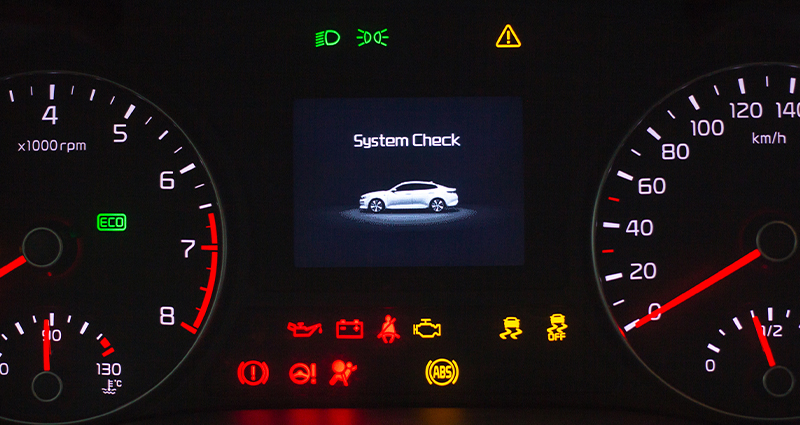Check Engine Light: The Illusion of Program Effectiveness

If we apply the thinking contained within 14 CFR Part 91.3(a) and 91.7 (a)(b), then we have the basis for further discussion on the topic of organizations and the need for self-assessments/audits or what we like to call in the aviation industry as internal evaluation or internal audit programs (IEP or IAP).
In 14 CFR Part 91.3(a), “The pilot in command of an aircraft is directly responsible for, and is the final authority as to, the operation of that aircraft.” This regulation is fairly straightforward.
Now, bringing in 14 CFR Part 91.7(a) and (b), we add the requirement for airworthiness, stated as:
(a) “No person may operate a civil aircraft unless it is in an airworthy condition.” and
(b) The pilot in command of a civil aircraft is responsible for determining whether that aircraft is in condition for safe flight. The pilot in command shall discontinue the flight when unairworthy mechanical, electrical, or structural conditions occur.
Taken at face value, these regulatory requirements placed on licensed pilots require more than just jumping in, turning the key and blasting off. It takes planning and research into the mechanical airworthiness of the aircraft and functionality of its systems to ensure the aircraft is “in a condition for safe flight.”
Pilots generally understand these requirements without question, as it can be a matter of life and death if ignored or performed hastily without regard for the potential consequences.
Applying this same thinking to managing any type of organization where employee, guest, passenger or customer safety is a component of the organization’s responsibility and liability would assume the organization would take the condition of “safe operation” as a fundamental imperative. One would think. However, recent history, regrettably, has indicated otherwise.
The aviation industry, from OEMs to airlines, charter companies, corporate flight departments and ground handlers and FBOs, deviates from that core responsibility for reasons that confound safety professionals.
An Overreliance on Electronics
When we identify an organization’s lack of effective oversight to ensure regulatory compliance and conformance to stated, documented company policies and procedures, we usually find a level of complacency and overreliance on electronic systems (software) that, due to incomplete integration and training effectiveness, aren’t using the software to its fullest potential, thereby getting only a portion of the message.
We’ve all heard the saying, “Garbage in, Garbage out.” But what about Insufficient Information in, Insufficient Conclusion out? That’s what this article is all about.
As a core competency, an aviation company’s responsibility must be to ensure regulatory compliance and conformance to company policies, procedures and processes, including voluntary standards. Taking this one step further, the organization’s performance (losses, incidents, accidents, or injuries) must be plugged into this equation as we must determine the effectiveness of what we apply as guardrails for the organization to perform, too.
If the documented policies, procedures and processes are inadequate, how is this best determined? The concept of internal audit or evaluation was designed for just this purpose: to provide a system of trained and qualified people, independent of the specific area they are evaluating, to assess the compliance, conformance and adequacy of performance to these documented requirements, be they regulations, company manuals, voluntary standards such as IS-BAO, IS-BAH, BARS, whatever.
Understanding the Dashboard Lights
When driving your car, you jump in, turn the key and maybe pay little attention to the dashboard lights, you know, the idiot lights. These lights can be considered performance indicators. Sound familiar?
In a March 20, 2021, article in Car & Driver Magazine,1 “Dashboard Warning Lights Explained,” the author said, “They light every time you start your vehicle, illuminated briefly as your car or truck warms up and makes sure all systems are safe and ready to go. Occasionally, one light might stay on, indicating there’s a problem. Be equally alert if one or more warning lights don’t briefly illuminate. If they aren’t functioning, you might not be able to detect a problem they’d warn you about.”
Further in the article, the author provides what we have come to understand as human nature (human factor) with the statement: “But if you don’t understand what a warning light means—or choose to ignore it—a small problem could turn into a bigger, more expensive, and potentially dangerous issue.”
“They’re all so different and cryptic, it makes it easy for most people to ignore them,” said Raul Arbelaez, Vice President of the Insurance Institute for Highway Safety’s Vehicle Research Center.
“Yet, as vehicles grow increasingly complex, it’s the human factor that can present hurdles. People often really don’t understand this highly complex device they’re motoring around at very high speeds,” Arbelaez added. “How many people do you know read the owner’s manual? Very, very few.”
Organizations Must Leverage Diagnostic Tools Effectively
In summary, there it is: How many of us actually read what we have committed our organization to? How many leaders truly hold their quality and safety program management to account, to perform as designed and refine as necessary to meet our core fundamental obligations?
Organizations that have embraced quality management (QM) and safety management (SM) programs benefit from these most effective diagnostic tools, which are applicable to all of aviation, from air carriers to airports, ground handlers/FBOs to airframe (OEM) and component manufacturers and repair facilities (MROs), as long as we know how to perform effectively.
References:
1 By Nick Kurczewski Published: Mar 20, 2021 Car & Driver

AvMaSSI provides safety, security and operational integrity evaluations, consulting and auditing to airlines, airports, charter and corporate operators, OEMs, marine operators, seaports, governments, international agencies and financial institutions the world over. AvMaSSI provides IS-BAO and IS-BAH preparation and audit services and supports Global Aerospace and its SM4 and Vista Elite Programs with focused safety/SMS, security, regulatory compliance and IS-BAO auditing services. AvMaSSI is a proud member of the Global Aerospace SM4 partnership program.
http://www.Avmassi.com
© 2025 Aviation & Marine Safety Solutions International. All Rights Reserved.
Next ArticleRelated Posts

Part 108: The Next Step in BVLOS Integration and Drone Innovation
As the drone industry awaits the Federal Aviation Administration’s (FAA) forthcoming Part 108 regulations, the landscape of Beyond Visual Line of Sight (BVLOS) operations stands on the brink of transformation. These anticipated rules aim to standardize BVLOS flights, enabling more complex and expansive drone missions across various sectors.

Giving the Hazard Log the Attention It Deserves
Safety risk profile. Hazard log. Hazard risk register. Whatever you call it internally, one thing is clear: It is a fundamental requirement in your safety management system.

